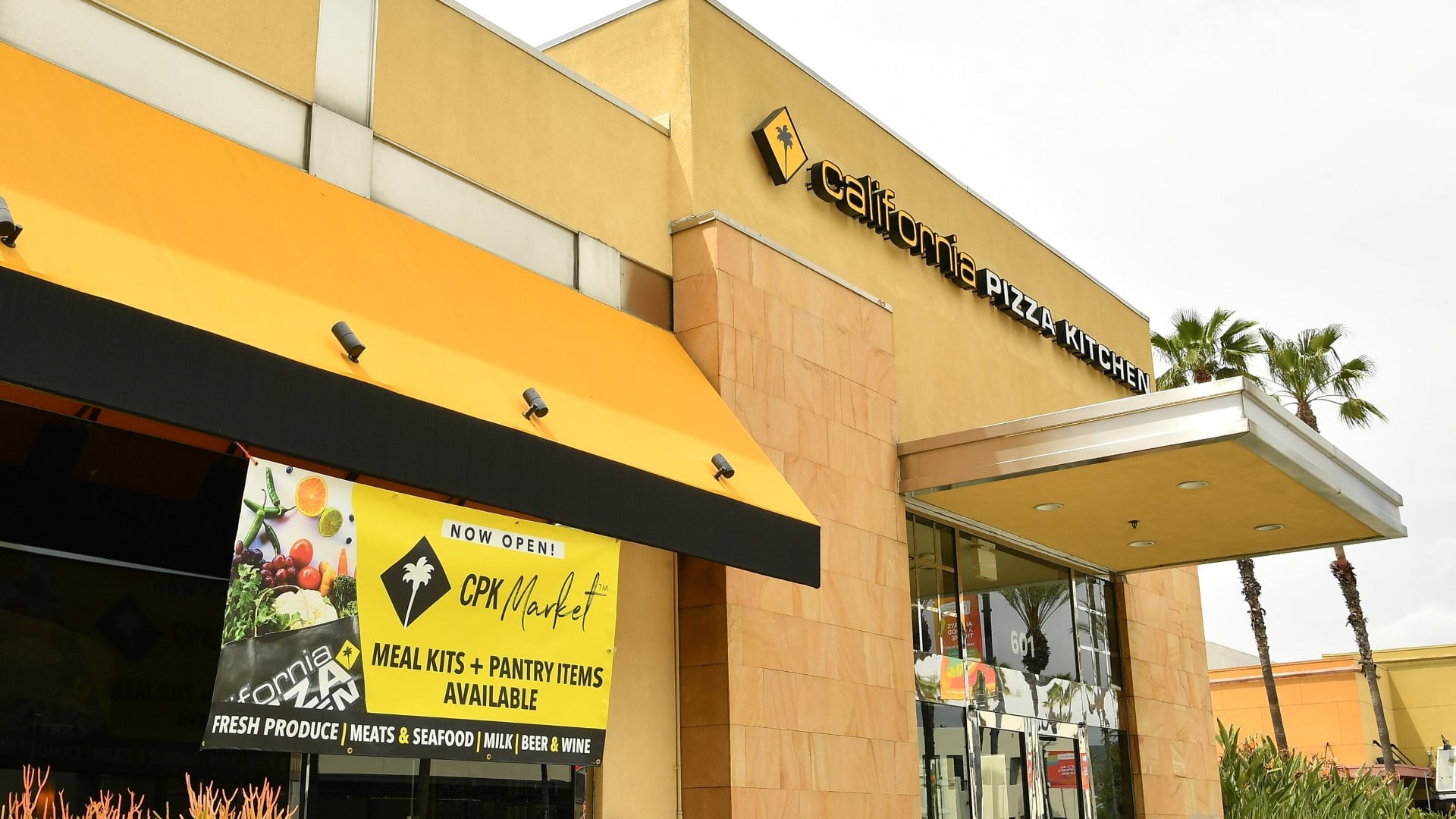Snapchat's parent company Snap is having its comeback moment, with shares up around 200 percent year-to-date. But, as it attempts to grow its advertising revenue to achieve profitability, it has faced pushback from some of the third-party media companies it relies on to create content.
Snapchat has been a messaging app since 2011, but the 2015 launch of the platform's Discover tab created new opportunities to work with news outlets and other creators whose stories and videos could keep people on Snapchat longer and serve as a magnet for advertisers.
Recently, Snap has been pushing some of its media partners to create more content for the platform, according to interviews with multiple publishers. A few say they have been urged to switch from "publisher stories" — a series of bite-sized slides — over to the more monetizable, and more costly-to-produce, video-based shows, although a Snap spokesperson says the company is still encouraging both.
Some media executives have told Cheddar they question whether it's worth spending more to create Snapchat content due to the platform's low ad rates.
CNN notably ended its Snapchat show "The Update" four months after it debuted in 2017. A source with knowledge of the product said the show was canceled because there was no way to make money on it. Late last year, Wired and GQ ended their daily channels as well. (Cheddar also recently ended its daily channel, but has continued to pursue a range of business opportunities with Snap.)
The New York Times also ended its channel earlier this year. A spokesperson declined to specify why, telling Cheddar, "We're happy with what we built for Discover, which helped us reach millions of young readers each month," adding, "We're considering new ideas to best represent The Times on the platform."
One media company that creates a daily magazine for the Discover platform told Cheddar it plans to reassess its strategy in the near future, and another outlet said that if it had to create an original video show just for Snap, it would not be able to justify the costs. The media companies declined to be named because their conversations with Snap were private.
Snap is reportedly looking at another way to feature news content. According to The Information, the company is considering a separate news section for 2020.
In interviews, several media executives spoke about the significant staffing levels they've needed to devote to creating Snapchat content.
"The reasons why budgets and headcounts are so high is because they are trying to do something over-the-top creatively because it's Snapchat, and you have to stand out against the other over-the-top creative," said John Freeman, vice president of equity research for the investment analytics company CFRA. "That sounds like high-end video production, with very little bang for your buck."
The Digital Video Advertising Boom
U.S. advertisers are expected to spend $17.56 billion on digital video advertising in 2019, according to eMarketer — and Snap sees an opportunity to get those dollars. It will need to do so quickly, considering it is still operating at a $305-million loss as of last quarter and only accounts for 0.6 percent of all U.S. digital ad budgets, per eMarketer.
Currently, Snap video ads on average cost a little less than one-third of the price of Facebook video ads, excluding Instagram, according to one video advertising platform that sells ads for both Snap and Facebook.
Media analyst Rich Greenfield, though, sees potential room for growth. "It's very early days [for Snap]," Greenfield said. "Facebook is 10 times larger in terms of quarterly revenues. Twitter is far bigger.
In October 2018, Snap hired Chief Business Officer Jeremi Gorman, who previously led global field ad sales at Amazon. It went a long way toward strengthening relationships with marketers, multiple ad agencies noted. Snap beat analyst revenue estimates during its latest earnings report in July, pulling in $388 million, a 48-percent increase year-over-year. It also announced 203 million daily active users at the time, increasing 8 percent year-over-year.
The company also says that the Discover audience has grown 35 percent year-over-year as of July and that the total time spent watching Discover was up more than 60 percent year-over-year.
"There is tremendous opportunity to grow revenues as time spent on the content increases and brand advertisers replace DR [direct response] advertisers," Greenfield said. He also predicts ad prices will increase as Snap gets more high-quality content.
Snap announced in April a slate of original shows with partners like NBCUniversal, BuzzFeed, Bunim/Murray, and Viacom. Some have been notable successes, including "Endless Summer" which brought in 28 million viewers during its first season. To sweeten the pot for publishers, Snap dropped its requirement that publishers create exclusive content for the platform and now offers its highest ad rates on shows via non-skippable ads.
CFRA'S Freeman, though, sees an uphill battle for the company as it competes with other large media companies. "They're trying to pivot to a place to compete with YouTube and even the ESPNs and the Netflixes of the world — full-on shows," Freeman said. "It doesn't make any sense."
Some publishers say Snapchat users don't watch for very long. One publisher that Cheddar spoke with reported an average viewing time of 46 seconds for Snapchat content. Of six publishers that Cheddar interviewed, the highest average time spent was 90 seconds. Average view times could vary for different publishers and Snap does not publicly disclose this information.
Despite the view times, some publishers devote significant resources to the platform.
Many publishers have assigned teams of five to 10 people to their Snapchat channels, and some include workers that are not solely dedicated to Snap. But one media company told Cheddar it had 26 people dedicated to Snap across its company, while another had 30 people dedicated to one show. NBC launched its Snapchat show "Stay Tuned" with a 30-person team, which has recently started creating content for other social platforms like TikTok.
The Original Content Question
Despite concerns about short view times and high-production cost, Snap is providing an audience for brands that want to reach Gen Z and Millennials.
"Snap has a distinct advantage of attracting a young and difficult-to-reach audience, and have recently demonstrated they can grow their audience with attractive customer experiences," media and marketing consultancy Ebiquity Group chief strategy officer Christian Polman said.
Snap's most recent earnings report says the majority of users are 18-34 and a spokesman says it reaches three-quarters of 13- to 34-year-olds in the U.S. But as some media companies and advertising agencies pointed out, not all companies are trying to reach young audiences. If Snap can't reach a mass audience, that limits its potential, one advertising platform said.
As for production costs, there are ways to make Snap shows for less money, but it typically involves reusing existing videos. First Media — which runs the Blossom, So Yummy, Blusher, and BabyFirst brands — recuts videos from other platforms and says it sees a profit. It has about three people dedicated to each of its shows.
"You need some creative editing," said First Media's chief product officer Yuval Rechter. "You're not giving all the answers in every snap and every story. You'll have to pay attention to analytics and do some post work, but it's pretty straightforward."
A recent Digiday study showed 55 percent of publishers profit off of Snapchat. Splitting the cost across multiple platforms can make it economically viable, Greenfield added.
However, this method means Snap isn't getting exclusive content that will draw in audiences. And with Instagram launching its video hub IGTV and copycat Instagram Stories, Snapchat's platform isn't as unique as it once was.
Some companies that do make original shows for Snap say it's worth the effort. Barstool Sports has five to eight people working on its two shows. CEO Erika Nardini declined to say if the company makes a profit on Snapchat but said it has enabled them to reach a broader audience.
"Our Snapchat audience is unique to our Twitter or podcast audiences," Nardini said. "Snapchat is definitely a younger audience and a more female audience." Barstool's "Group Chat" Snapchat show skews about 58 percent women.
Still, some companies would need the ad revenue to justify bespoke production costs. One company tells Cheddar it spends about $150 to repurpose content to fit Snapchat's vertical interface. However, each episode on its own costs up to $10,000 to produce. While it can recoup $150 through advertising, there's no way Snapchat ad sales would cover the full cost of production, they added.
Some advertisers and advertising platforms say Snap's push for original content has come too late. One leading advertising platform said it is slowing down its integrations with Snap because there's "little to no demand" for Snap ads from its customers.
"They still haven't found the right formula, and the problem is they aren't iterating fast enough," said CFRA's Freeman. "I just don't think it seems like they are developing or honing in on what ads work on their platform, unlike Facebook or Twitter who have been able to crack that code."
From the view of Wall Street, however, Snap is having a good year, rebounding from a disastrous 2018 when a botched redesign of the app sent users fleeing. Share price is now three-times its historic low of under $5, and the increase in users means Snap's shows provide reliable opportunities to advertise on content that people are watching.
"The holy grail of snackable content going 'viral' just isn't happening as much as consumers get increasingly comfortable viewing long-form content on mobile/social platforms," said Billy Boulia, the group connections director for advertising agency The Community. "Therefore, Snap is making a smart move in 'making advertising great again' in terms of encouraging clients and creative teams to make content that is a longer-form narrative."
But will app users AND investors continue to show their support? We'll learn more in late October when Snap releases Q3 earnings.









